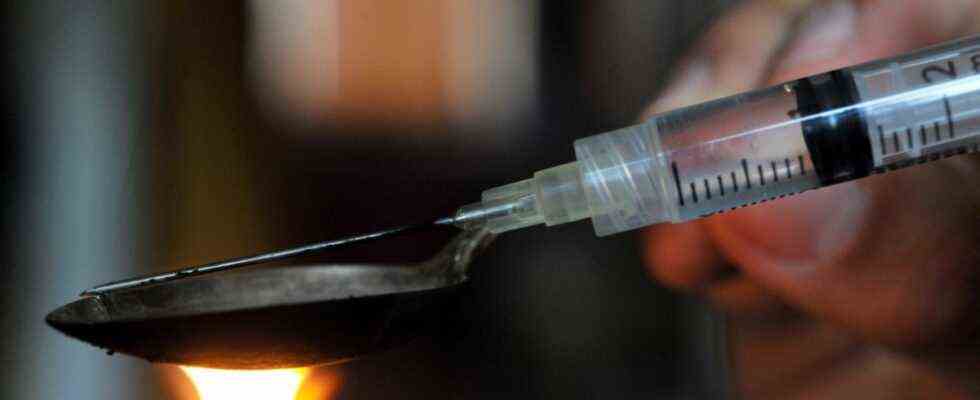Anyone who thought heroin had disappeared from the drug scene is wrong. The opioid was by far the most common cause of drug deaths in Bavaria last year: The State Criminal Police Office (LKA) has recorded 109 such cases. The number of unreported cases is probably a lot higher. Other opioids such as fentanyl or methadone are also still common. The mortality of opioid addicts is ten times higher than that of non-addicts. About a third die from an overdose. Often times, addicts cannot be saved even if someone tries to provide help. For this reason, the Bavarian Ministry of Health is funding the model project “Take-Home-Naloxon” (THN), which has been running in Bavaria since 2018. The University of Regensburg is in charge and cooperates with various facilities of the Bavarian Addiction Aid.
The project trained drug users on how to use the opioid antidote naloxone in an emergency. In the event of an overdose, naloxone can reverse the respiratory-paralyzing effects of heroin and other opioids within a very short time. On Thursday, Health Minister Klaus Holetschek and the Federal Drug Commissioner Daniela Ludwig (both CSU) presented the results of the study and announced a follow-up project.
“We are looking back on a successful project that saved lives,” said the health minister. A total of 550 participants were given naloxone. The antidote was used in 102 cases and probably prevented worse things from happening. “Naloxone weakens the effect and can prevent drug death if it is used correctly,” said Holetschek. Therefore, it was right to carry out the project in Bavaria, said the drug commissioner. “Drug policy has to be less about fixed ideologies and more about people,” said Ludwig on Thursday.
Heike Wodarz von Essen, the lead project manager at the University of Regensburg, summarized the results of the project. There is a great willingness among opioid addicts to help others in the event of an overdose. “Scientifically speaking, this is twice as high as that of the normal population in a car accident,” she said. Therefore, it is the logical conclusion to distribute naloxone among those affected. But that requires the appropriate skills. The evaluation showed that the participants “gained significantly more knowledge and skills” through the training. This also applies to practical application.
Uwe Schmidt, managing director of drug help Schwaben in Augsburg, is an explicit supporter of the project. “This finally made it possible to give drug users something to hand,” he said. This allows you to take responsibility yourself. “This is also the right step to fundamentally raise awareness of the topic,” said Schmidt. Especially against the background of increasing drug consumption. “We are increasingly observing heroin users again – even among young people,” he said.
The drug help in Augsburg has already had positive experiences with users who use naloxone. “They are very proud to have done that,” said Schmidt, “they no longer feel so powerless – and they are alive.” The addicts are encouraged not to give up. According to the drug advisor, there are no risks or side effects when taking naloxone: “You cannot abuse this product – only use it and thus save lives.” However, it is important that drug users know what to do in an emergency. Naloxone alone is not enough for this. First aid measures and calling the emergency doctor are of course still necessary.
For the drug commissioner, the results of the study are a sign that the procedure will be implemented throughout Germany. “The Bavarian model project should become a nationwide model for success,” said Ludwig. Implementation is now being planned. “We have to consistently continue on this path,” said Holetschek, “this will continue to be an integral part of drug aid in the future.”

